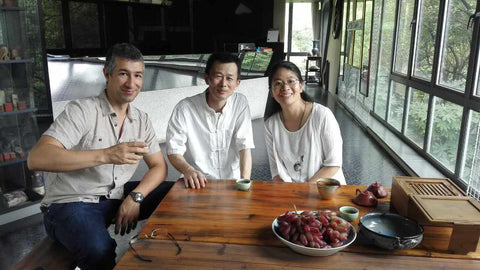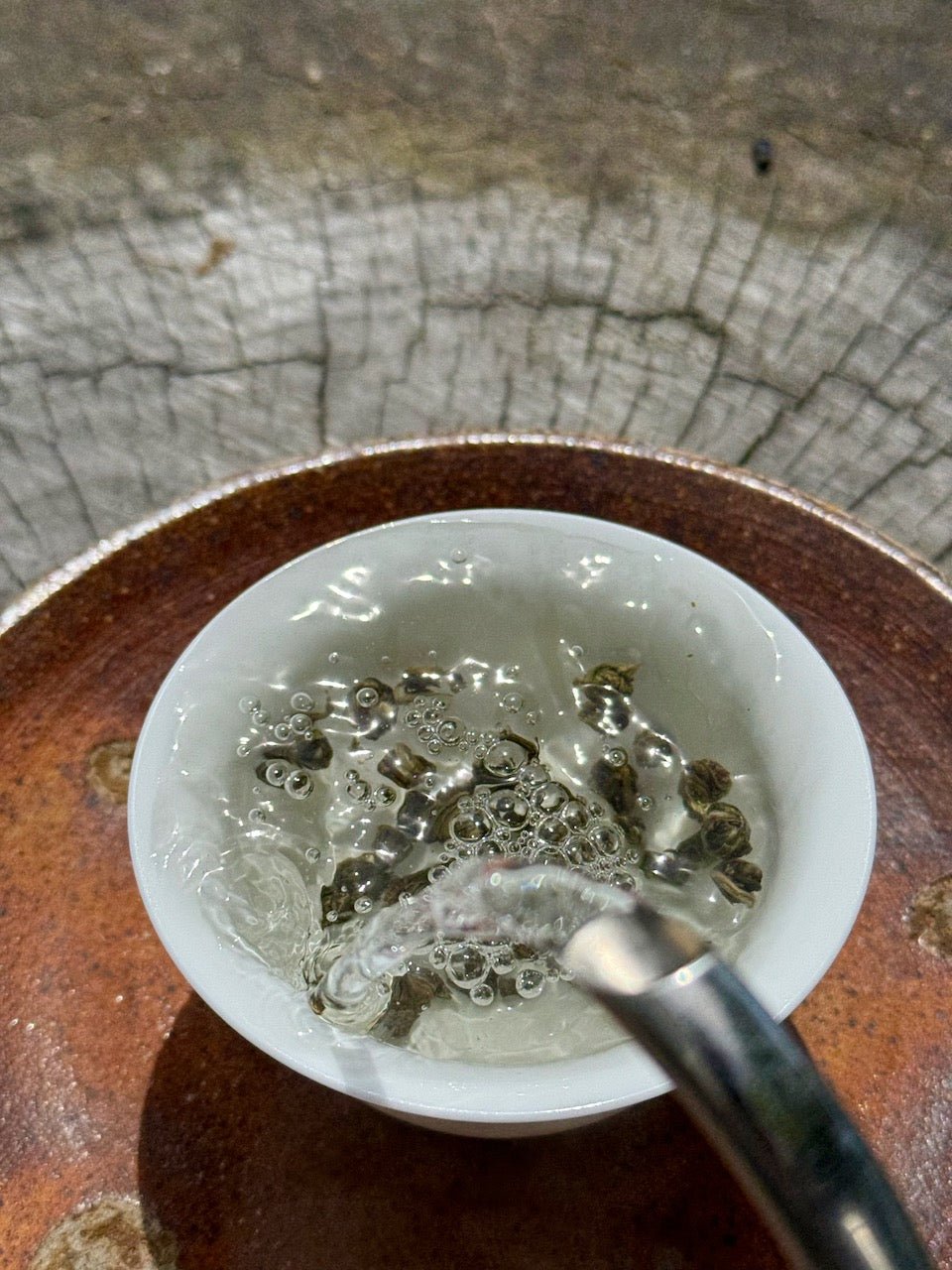What makes high grade jasmine tea so special?
The traditional method to handcraft this tea is long and requires extreme attention to detail; the results, however, are worth the trouble.
- Fresh jasmine blossoms are harvested during the early evening when they are most fragrant. It must not be a rainy evening.
- The harvested jasmine flowers are layered with (traditionally) green tea leaves; white or black tea are also used sometimes.
- The blossoms and tea leaves are left together overnight, allowing the tea leaves to absorb the floral aroma. This process may be repeated up to seven nights.
- The leaves and blossoms (which have by now transferred their aroma) are carefully separated. When this process is done by hand it requires long hours and intense concentration.
- The scented leaves are dried to preserve their newly acquired fragrance.
Experience: this tea reminds us of an evening walk in a Chinese garden. Delicate floral aromas are followed by a naturally sweet, long lasting mouthfeel.
Meet the Blossom: Jasmine (Jasminum sambac)
Did you know that jasmine belongs to the Oleaceae (olive) family? These star-shaped blossoms, typically white or yellow, are native to tropical and subtropical regions of Eurasia, Australasia, and Oceania. They bloom in summer and are highly prized for their intoxicating (in a positive way) aroma.
These jasmine pearls were selected and shipped by our old friend Zhang Wen Hua (Sister Zhang), along with her 2024 harvest of Zisun and Anji Bai Cha. Zhang is a farmer and a scholar, devoted to preserving old tea traditions. Her tea trees, many of which are over 80 years old, are located in a valley surrounded by mountains, covered by protected national forest. She is very happy to share tea and the culture around it.

------------------
ORIGIN: Fuzhou, Fujian, China
GPS: 26.0° N 119.3° E
-------------------
BREWING SUGGESTION:
Tea: 3g
Water: 180ml @ 80ºC
1st steep: 45"
Subsequent Steeps: ~15"







































